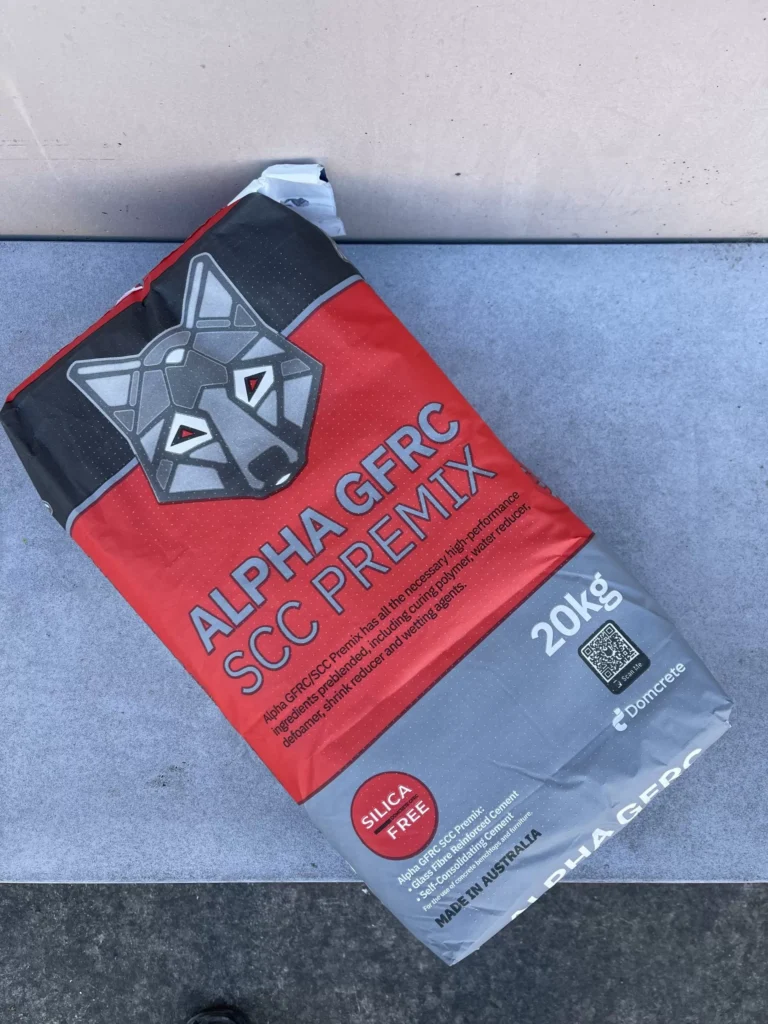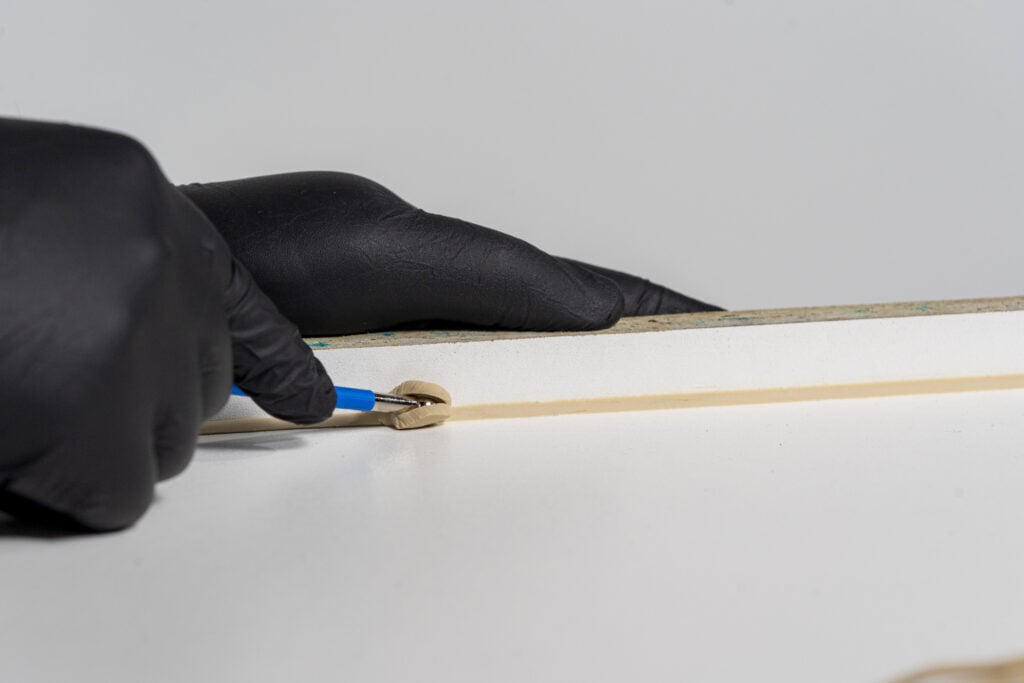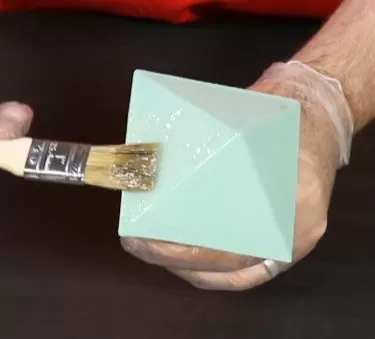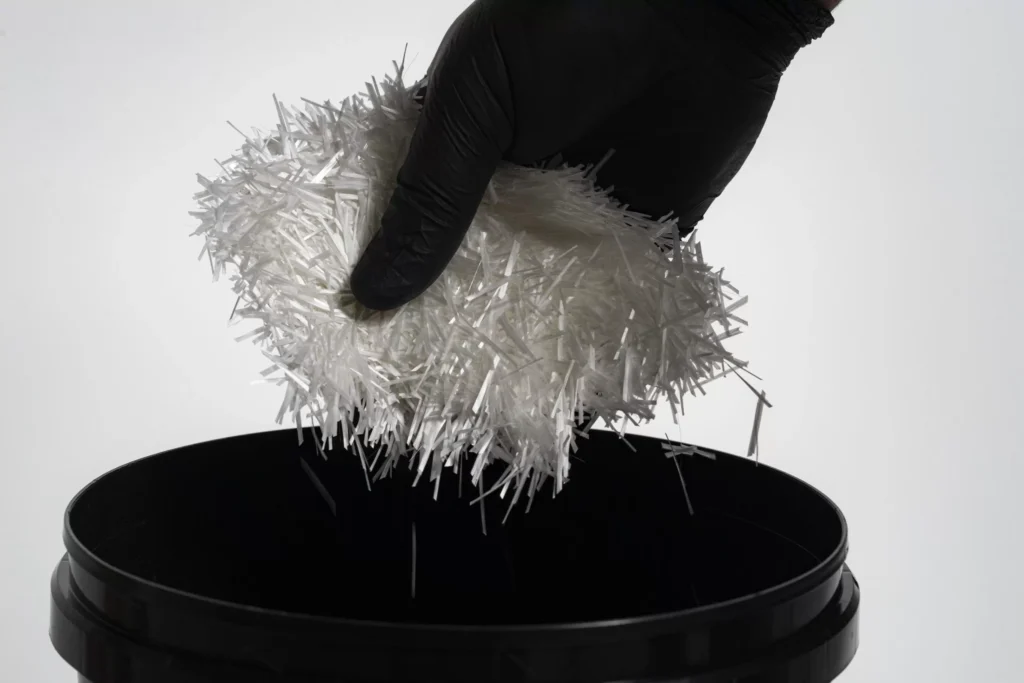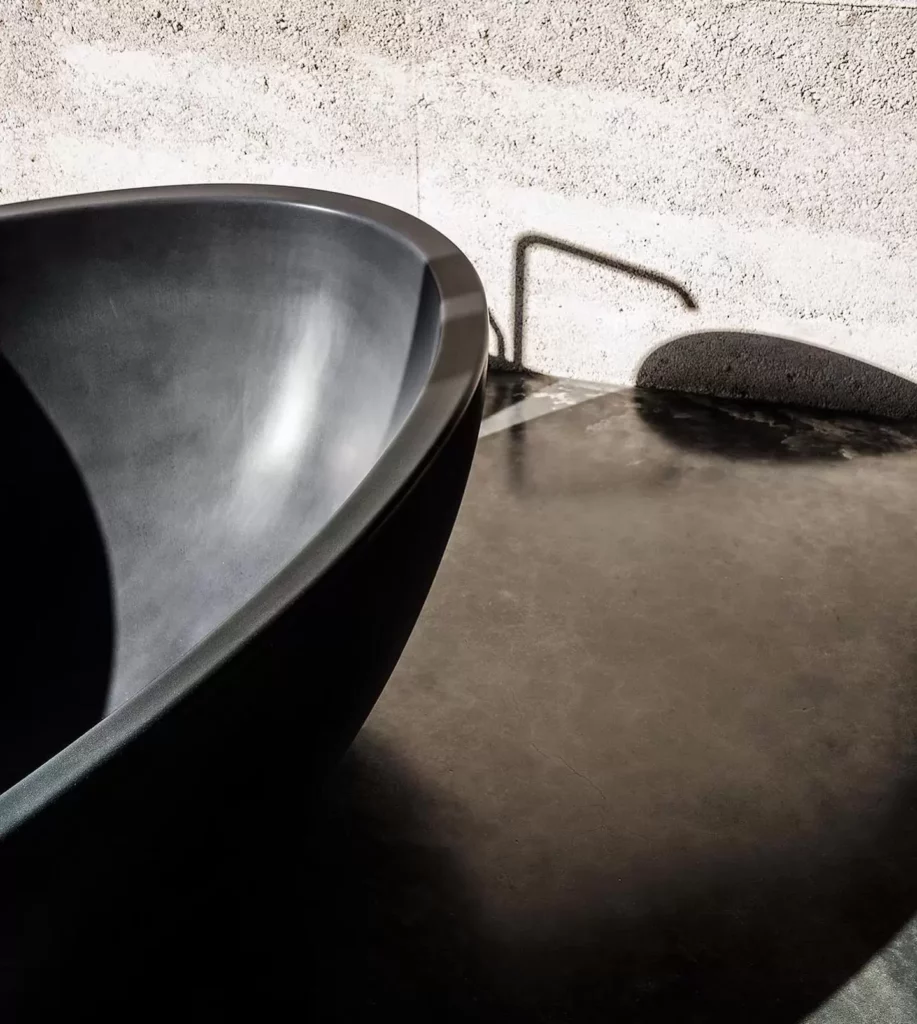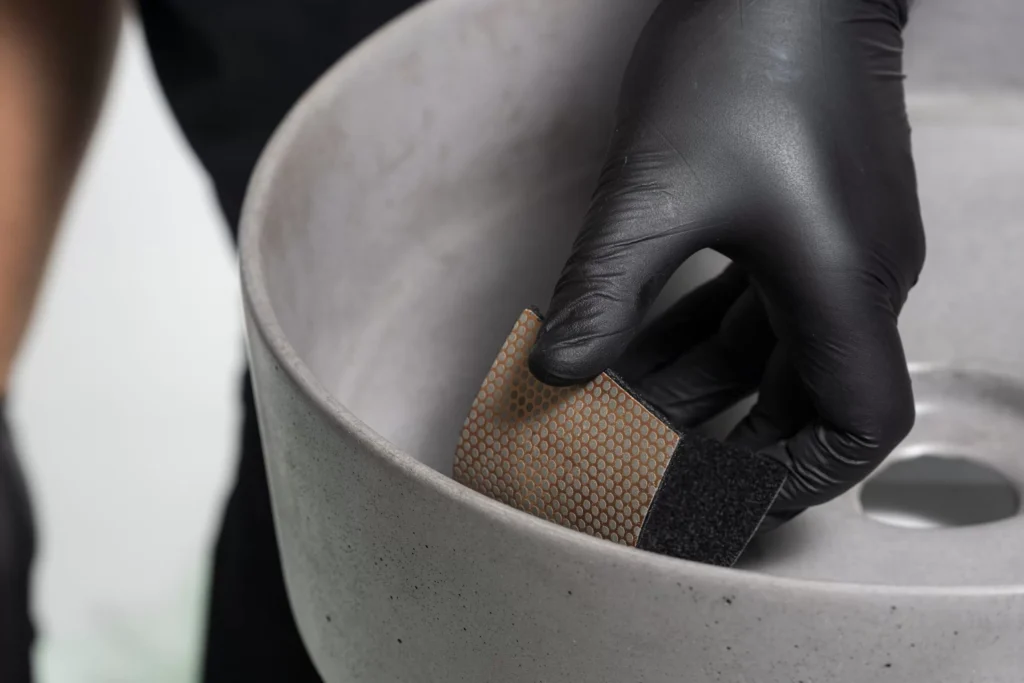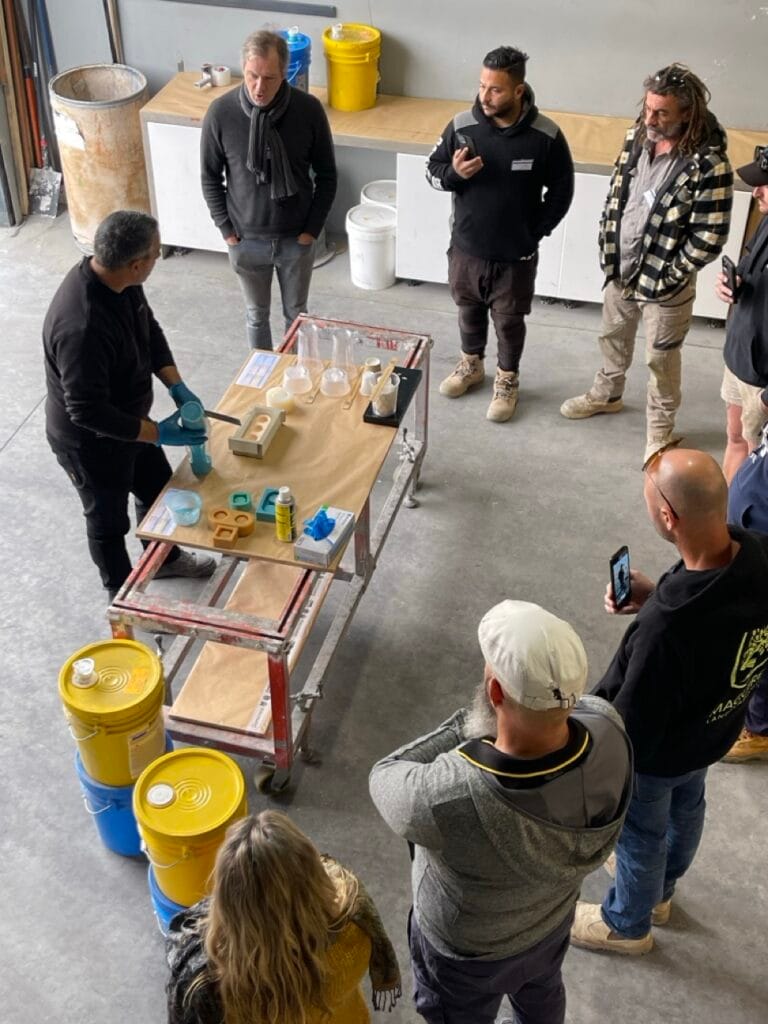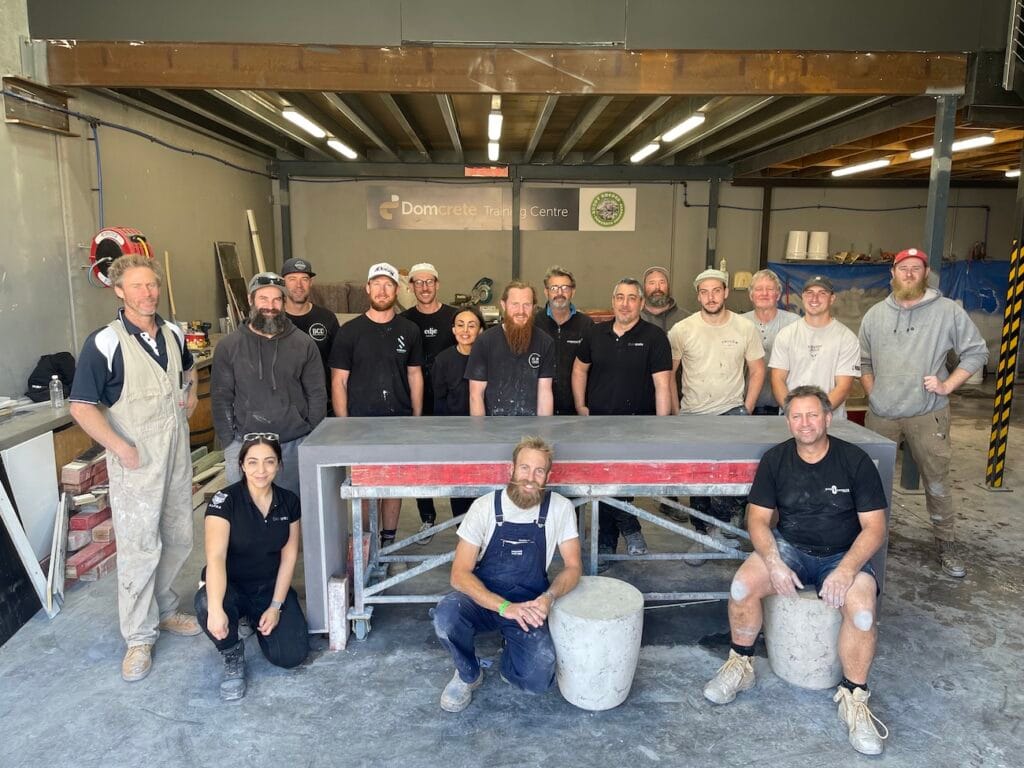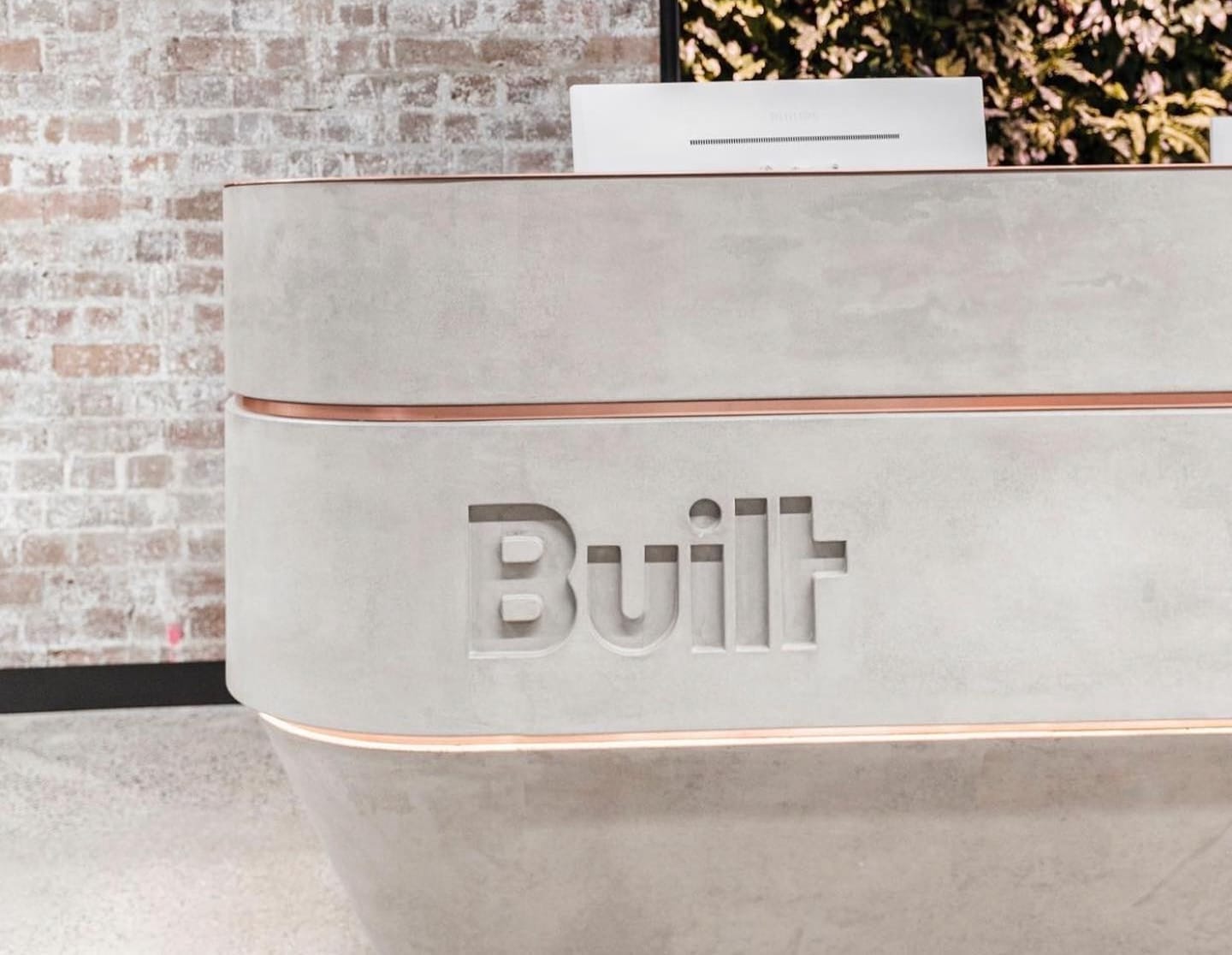Whoever said there are 50 shades of grey clearly hasn’t worked with concrete.
In the world of engineered cementitious mix designs, I’ve encountered hundreds of shades and tones, each one as unique as the project it’s part of. The range of colors available to concrete artisans is far more diverse than many realize, especially when you start experimenting with iron oxides.
But what exactly is “concrete grey”?
For us at Domcrete and our customers, achieving concrete grey means adding pure iron oxides into our premix or mix formulations. This doesn’t just tint the concrete; it completely alters its appearance, transitioning it from the usual white base to various shades of grey. The precise mix of iron oxide pigments allows us to control the exact tone, creating everything from light, soft greys to deeper, almost charcoal-like shades.
Why not grey cement?
You may be wondering, “Why don’t we just use grey cement?” Well, grey cement doesn’t offer the same level of color control, and it can lead to inconsistencies in tone. We’ll discuss that more in a future post, but for now, know that the use of iron oxides allows for greater precision and versatility in creating the perfect concrete grey.
So, how exactly do we achieve that perfect shade of concrete grey?
Iron oxides are dosed based on the cement content or in grams per bag, and the choice of iron oxide determines the tone and undertones of the final colour. Here are the main types of iron oxides we use to achieve different shades of grey:
1. Black Iron Oxide:
Black Iron Oxide creates shades of grey with cool undertones. These tones often evoke the appearance of metal, such as steel or silver, and tend to have a “cooler” feel to them. When you think about the colour of water or the sky.
- Undertone: Cool, metallic
- Common Use: Modern, industrial, and sleek finishes
- Example Shades: Cool greys, steel blues, silvery greys

2. Warm Grey Iron Oxide:
For a more natural, earthy look, Warm Grey Iron Oxide is used. This oxide imparts a warmer tone to the concrete, leaning toward the shades of the sun or the glow of fire. It counters the cooler blue hues often found in concrete with a rich, golden undertone, making it a popular choice for creating more organic, timeless concrete looks.
- Undertone: Warm, earthy
- Common Use: Natural finishes, rustic designs, and residential projects
- Example Shades: Soft, sandy greys, earthy browns, and warm taupes

3. Pigment Dosing, Variability, and the Influence of Sealers:
Achieving the perfect shade of grey is an art, and the amount of iron oxide added to the mix will affect the depth of the colour. Factors such as the mix design, curing conditions, and finish technique will all influence how the grey looks once the concrete is set.
For example, a more concentrated dose of Black Iron Oxide may result in a darker, bolder grey, while a lighter dose may yield a more subtle tone. Similarly, the use of warm grey oxide at higher dosages will create a deeper, richer natural tone.
The world of concrete grey is incredibly varied, with countless possibilities depending on the mix and desired outcome. Whether you’re looking for the industrial elegance of a cool, steel-toned grey, or the earthy warmth of natural concrete, iron oxides offer a precise and customizable way to achieve just the right shade. The beauty of concrete lies in its flexibility, and with the right pigments and sealers, it can transform any space with its unique, timeless appeal.
Need help with oxides or creating the perfect concrete grey mix?
If you’re unsure about the right pigments or how to achieve the exact grey you’re looking for, don’t hesitate to reach out. Our team at Domcrete is here to assist with product recommendations. Let us help you bring your concrete visions to life!
